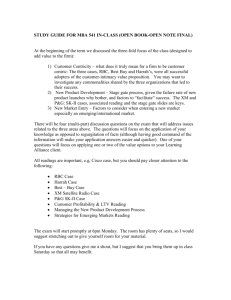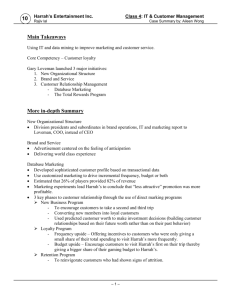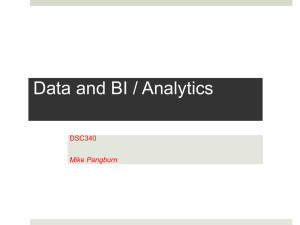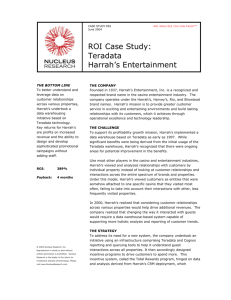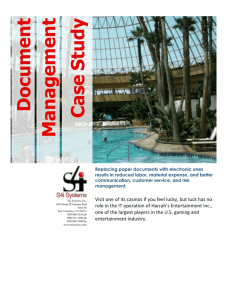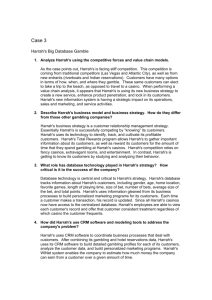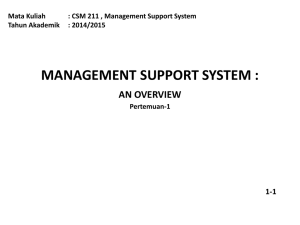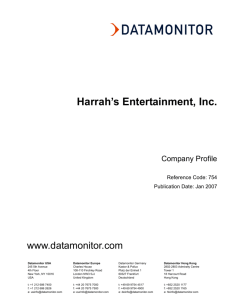Harrah's Entertainment
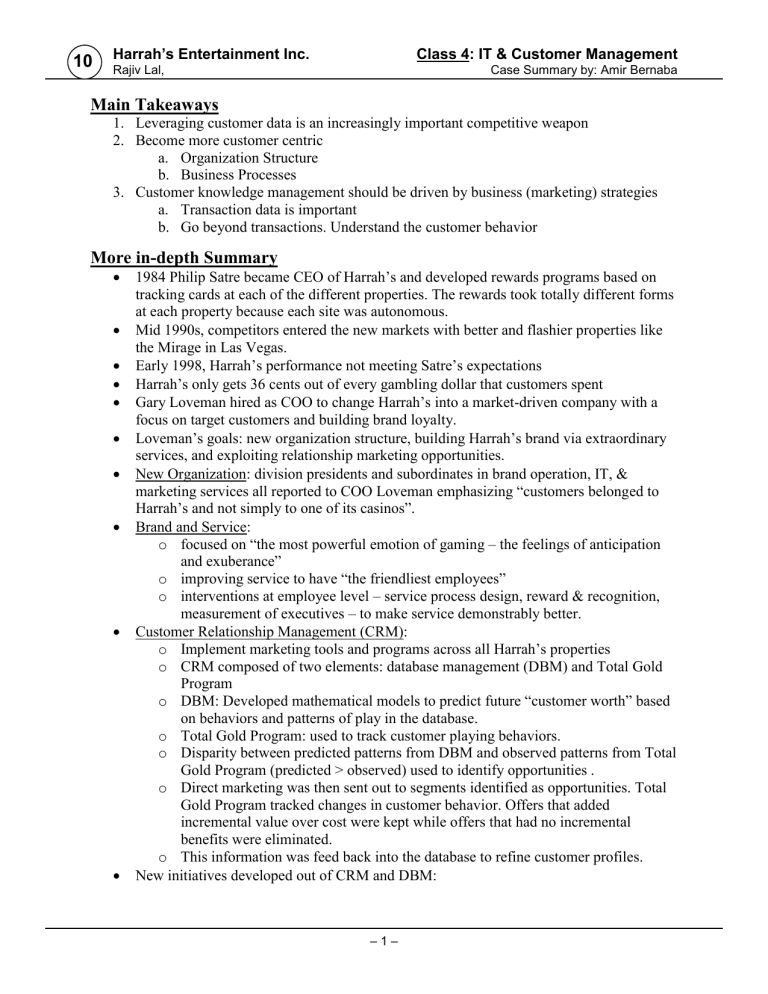
10
Harrah’s Entertainment Inc.
Rajiv Lal,
Class 4: IT & Customer Management
Case Summary by: Amir Bernaba
Main Takeaways
1.
Leveraging customer data is an increasingly important competitive weapon
2.
Become more customer centric a.
Organization Structure b.
Business Processes
3.
Customer knowledge management should be driven by business (marketing) strategies a.
Transaction data is important b.
Go beyond transactions. Understand the customer behavior
More in-depth Summary
1984 Philip Satre became CEO of Harrah’s and developed rewards programs based on tracking cards at each of the different properties. The rewards took totally different forms at each property because each site was autonomous.
Mid 1990s, competitors entered the new markets with better and flashier properties like the Mirage in Las Vegas.
Early 1998, Harrah’s performance not meeting Satre’s expectations
Harrah’s only gets 36 cents out of every gambling dollar that customers spent
Gary Loveman hired as COO to change Harrah’s into a market-driven company with a focus on target customers and building brand loyalty.
Loveman’s goals: new organization structure, building Harrah’s brand via extraordinary services, and exploiting relationship marketing opportunities.
New Organization: division presidents and subordinates in brand operation, IT, & marketing services all reported to COO Loveman emphasizing “customers belonged to
Harrah’s and not simply to one of its casinos”.
Brand and Service: o focused on “the most powerful emotion of gaming – the feelings of anticipation and exuberance” o improving service to have “the friendliest employees” o interventions at employee level – service process design, reward & recognition, measurement of executives – to make service demonstrably better.
Customer Relationship Management (CRM): o Implement marketing tools and programs across all Harrah’s properties o CRM composed of two elements: database management (DBM) and Total Gold
Program o DBM: Developed mathematical models to predict future “customer worth” based on behaviors and patterns of play in the database. o Total Gold Program: used to track customer playing behaviors. o Disparity between predicted patterns from DBM and observed patterns from Total
Gold Program (predicted > observed) used to identify opportunities . o Direct marketing was then sent out to segments identified as opportunities. Total
Gold Program tracked changes in customer behavior. Offers that added incremental value over cost were kept while offers that had no incremental benefits were eliminated. o This information was feed back into the database to refine customer profiles.
New initiatives developed out of CRM and DBM:
– 1 –
10
Harrah’s Entertainment Inc.
Rajiv Lal,
Class 4: IT & Customer Management
Case Summary by: Amir Bernaba o New Business Program: designed to improve the effectiveness of converting new
Total Gold Members into loyal customers o Loyalty Program – Frequency Upside: designed to offer incentives for customers to visit Harrah’s properties more frequently o Loyalty Program – Budget Upside: designed to increase per visit spending by getting customers to visit Harrah’s properties first o Retention Program: designed to reinvigorate customers who had broken their historical visitation pattern or had show other signs of attrition o Total Rewards Program: designed to capture business lost during cross market visits by making it easier for customers to earn and redeem rewards at Harrah’s properties across the country
Case Discussion / Digest Questions
1.
What is Harrah's value discipline? a.
Harrah’s focuses on the value system of customer intimacy with the goal of creating customer loyalty.
b.
Harrah’s uses data collected by its casinos to identify and directly market to segments that can add incremental value greater than cost.
2.
How does Harrah's exploit customer data to execute its value discipline? a.
Harrah’s focused on customer intimacy for its values system. b.
Harrah’s leveraged customer intimacy to achieve overall business objectives : i.
generating new business, ii.
fostering brand loyalty, iii.
reinvigorating customers who were showing decreased involvement in the casino. c.
IT infrastructure was geared to link the different casino properties to a single database and to provide a common platforms with tools for analyzing customer behaviors. The IT system also made it easier for customers to redeem rewards across the different properties. d.
Customer preferences, playing habits and other information accumulated over the time rather than depending on a single observation as other casinos were doing. e.
Harrah’s developed mathematical models of future “customer worth”
based on the data. f.
Using such information, Harrah’s found populations that it could target with direct marketing using data on customer preferences to design the exact message used in direct marketing. g.
Market experiments were conducted to decide on which incentive programs were actually producing increment increases in returns.
3.
Why is it important to use the "customer worth" in the database marketing programs, rather than the observed level of play? a.
Observed level of play does not account for the fact that customers may play at multiple different casinos (cross market) meaning that they spent relatively smaller amounts at Harrah’s. b.
The disparity between observed level of play (past behavior) and predicted behavior (future customer worth) identified customers that Harrah’s could win over from competitors.
– 2 –
